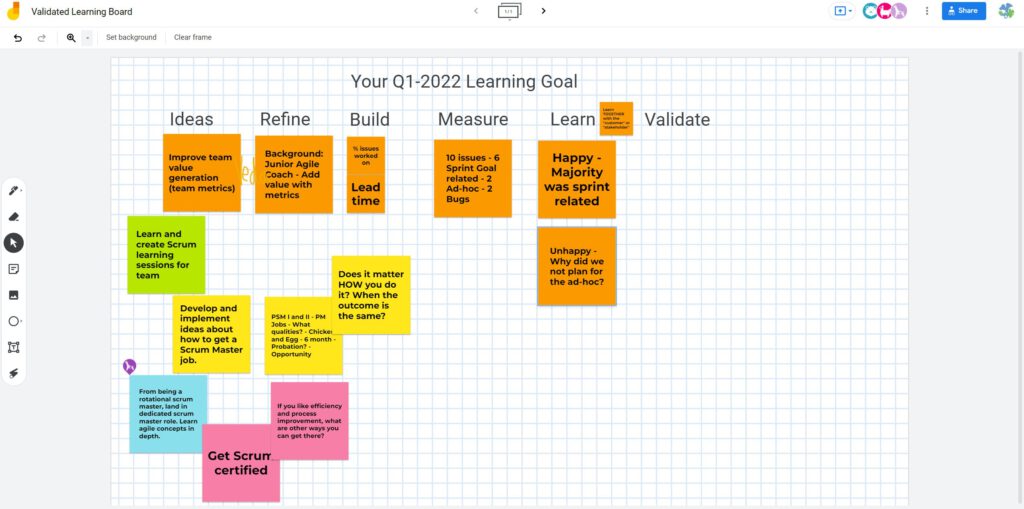
I had done a course with Chris recently on Sales and I was interested on his take on Project Management and I was not disappointed. Chris has a clear way of explaining things and providing great examples to cement the knowledge.
I wanted to see how Agile methodologies map to the Twelve Steps to Managing a Project Successfully.
Twelve Steps to Managing a Project Successfully
- Define the project.
- List the tasks.
- Plan the running order.
- Add contingency.
- Consider crashing.
- Make a Gantt chart.
- Calculate resource requirements.
- Assess risks and prepare action plans
- Monitor progress using the Gantt chart.
- Monitor costs.
- Readjust your plan.
- Review.
Here is my take of each of the steps with an Agile twist:
| Item | Classical Project Management | Custom | Agile |
|---|---|---|---|
| Define the project | Clear scope and objectives set at the beginning, with detailed planning upfront. | Clear scope and objectives set at the beginning of each sprint, allowing for some flexibility in implementation. | Flexibility to adapt to changing requirements throughout the project, allowing for continuous improvement. |
| List the tasks | Tasks are clearly defined and prioritized in a detailed project plan. | Tasks are clearly defined and prioritized, with some flexibility for adjustments based on evolving needs. | Agile teams can quickly respond to changing priorities and customer needs, enhancing responsiveness and customer satisfaction. |
| Plan the running order | Strict adherence to predetermined project schedule and sequence of tasks. | Adaptable planning to accommodate changing priorities or unforeseen circumstances. | Agile planning allows for iterative and incremental delivery, enabling faster time-to-market and early feedback. |
| Add contingency | Contingencies are included in the initial project plan but may be inflexible. | Built-in flexibility to accommodate unforeseen challenges or changes in project scope. | Agile teams can adapt quickly to unforeseen challenges, leveraging iterative planning and incremental delivery to manage risks effectively. |
| Consider crashing | Overtime or resource reallocation may be used to meet deadlines, but with limitations. | Flexibility to adjust resources or timelines within certain constraints to meet project deadlines. | Agile methodologies provide various options for managing tight deadlines or resource constraints, such as reprioritizing backlog items or adjusting sprint scope. |
| Make a Gantt chart | Gantt charts are commonly used to visualize project schedules and dependencies. | Gantt charts or similar tools may be used, but with flexibility to adapt as needed. | Provides a visual representation of tasks and dependencies, aiding in communication and planning. |
| Calculate resource requirements | Resource requirements are calculated based on detailed project plans and estimates. | Resource requirements are assessed and adjusted as needed throughout the project lifecycle. | Supports effective resource management and allocation, facilitating efficient project execution. |
| Assess risks and prepare action plans | Risks are identified and addressed through proactive risk management processes. | Risks are continuously assessed, with proactive mitigation strategies in place. | Encourages continuous risk assessment and mitigation, improving project resilience and adaptability. |
| Monitor progress using the Gantt chart | Progress is tracked using the Gantt chart, with deviations addressed through formal change control processes. | Progress is tracked using the Gantt chart or similar tools, with flexibility to adjust plans based on real-time feedback. | Provides visibility into project progress and helps identify potential bottlenecks or delays. |
| Monitor costs | Costs are monitored closely against the budget, with any deviations addressed through formal change requests. | Costs are monitored throughout the project, with adjustments made as necessary to stay within budget constraints. | Enables effective cost management and budget tracking, ensuring project stays within budget constraints. |
| Readjust your plan | Changes to the project plan are managed through formal change control processes. | Plans are adjusted as needed based on evolving requirements or feedback, with appropriate documentation and communication. | Supports adaptive planning and decision-making, enabling teams to respond quickly to changing circumstances. |
| Review | Formal reviews are conducted at key project milestones to assess progress and identify areas for improvement. | Regular reviews are conducted to evaluate progress, identify lessons learned, and make continuous improvements. | Promotes continuous learning and improvement, enhancing team performance and project outcomes. |
It think the interesting journey in each of these steps is to figure out the “Custom” for the client and deliver what is right for them.
Links:
https://www.linkedin.com/learning/project-management-simplified-2019

